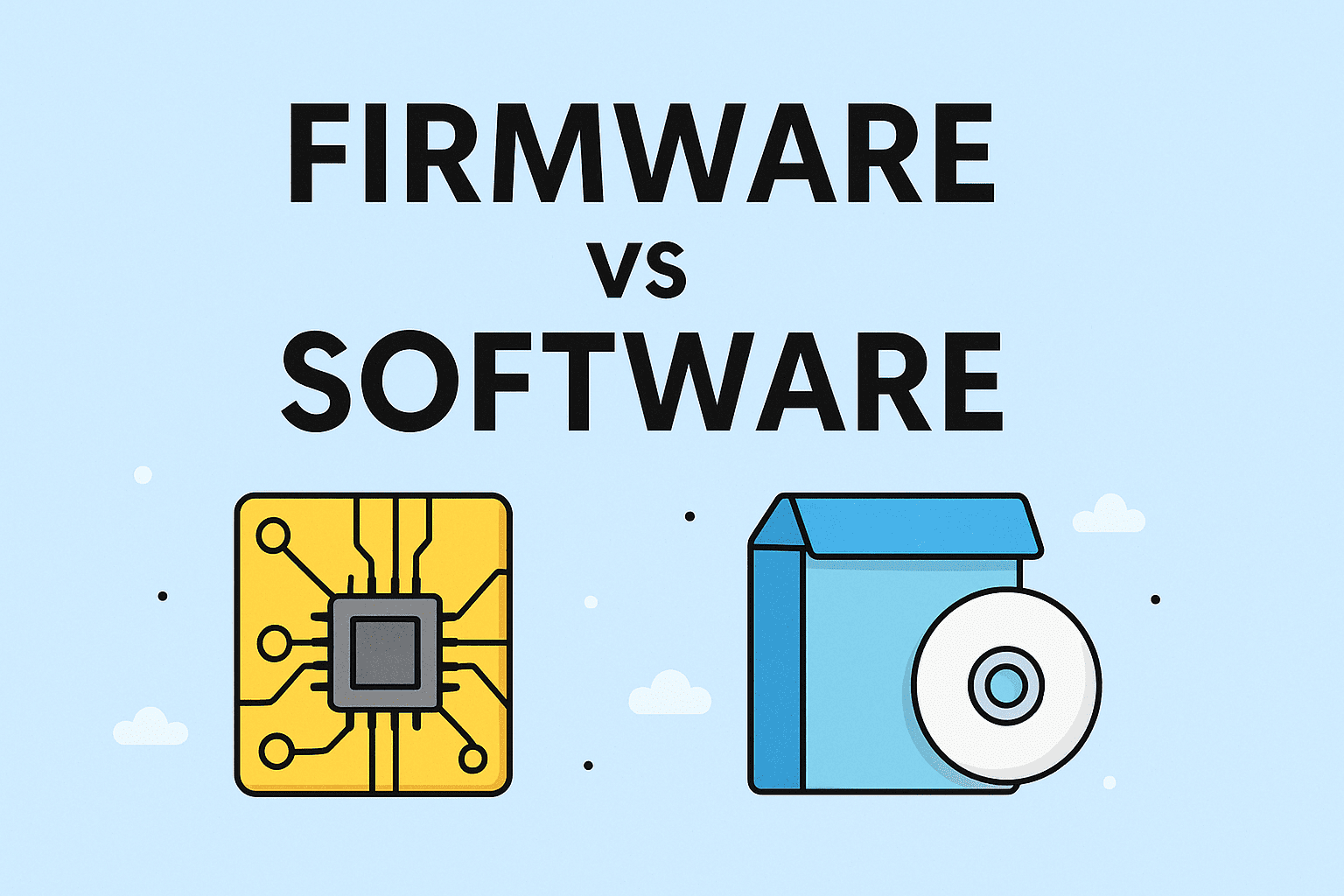Updated on October 13, 2025, by OpenEDR
What Is Firmware?
Firmware is specialized code programmed directly into hardware devices. Unlike regular software, it is tightly bound to the hardware and manages how devices operate.
Key Features of Firmware:
Stored in non-volatile memory (like ROM, EPROM, or flash).
Provides basic instructions for hardware functionality.
Rarely updated, but when patched, updates often fix critical security flaws.
Examples include BIOS in computers, firmware in routers, or printer controls.
In essence, firmware is what allows your hardware to “boot up” and communicate with higher-level software.
What Is Software?
Software refers to the applications, operating systems, and programs that run on top of hardware. Unlike firmware, software is flexible, easy to update, and user-facing.
Key Features of Software:
Stored on hard drives, SSDs, or cloud environments.
Can be easily installed, modified, or deleted.
Provides functionality for tasks like browsing, word processing, or cybersecurity defense.
Examples include Windows, Linux, Microsoft Office, and endpoint security tools.
Firmware vs Software: Main Differences
To simplify, here’s a side-by-side comparison:
| Aspect | Firmware | Software |
|---|---|---|
| Purpose | Controls hardware operations | Provides functionality and user interaction |
| Storage | Embedded in non-volatile memory | Installed on hard drives/SSDs/cloud |
| Flexibility | Difficult to change/update | Easily updated or uninstalled |
| Examples | BIOS, router firmware, printer firmware | Operating systems, apps, security tools |
| Cybersecurity Risk | Vulnerable to hidden rootkits or exploits | Vulnerable to malware, ransomware, phishing |
Why Does the Difference Matter in Cybersecurity?
The firmware vs software distinction isn’t just academic—it’s crucial for protecting modern enterprises. Cybercriminals increasingly target firmware because it’s harder to detect and patch. A compromised firmware can give attackers persistent control over a device, even if the operating system is reinstalled.
For businesses, this means:
Firmware attacks = stealthy persistence
Software attacks = visible, often easier to remediate
Both require layered defenses such as endpoint detection and response (EDR) tools.
Examples of Firmware and Software in Action
Routers & IoT devices: Firmware controls how data packets move, while software apps help configure networks.
Laptops & PCs: BIOS (firmware) boots the machine, and the OS (software) allows users to run apps.
Printers: Firmware ensures hardware works correctly, while print drivers (software) interface with computers.
This interaction illustrates why both must be managed effectively for security and performance.
How Businesses Should Manage Firmware and Software
Best Practices:
Regular Updates – Always apply firmware patches released by hardware vendors.
Endpoint Protection – Use software-based defenses like antivirus, EDR, and firewalls.
Vulnerability Scanning – Identify weaknesses across both firmware and software layers.
Zero Trust Security – Limit access, monitor anomalies, and enforce strict authentication.
Backup & Recovery – Ensure business continuity in case of compromise.
Firmware vs Software in IT Strategy
For IT managers and executives, knowing where firmware and software vulnerabilities lie can inform better investment decisions.
Firmware risks are harder to monitor but catastrophic if ignored.
Software risks are more common, but easier to manage with established security frameworks.
Adopting advanced tools like OpenEDR helps bridge the gap, providing visibility into both firmware and software threats.
FAQs on Firmware vs Software
1. What is the main difference between firmware and software?
Firmware manages hardware at a low level, while software provides user-facing functionality.
2. Can firmware be updated like software?
Yes, but updates are less frequent and often harder to install.
3. Is firmware more secure than software?
Not necessarily. Firmware is harder to detect and patch, making it a prime target for advanced cyberattacks.
4. What happens if firmware gets corrupted?
The device may fail to boot or operate, requiring reinstallation or hardware replacement.
5. Why should businesses care about firmware security?
Because compromised firmware can give attackers persistent, stealthy access to critical systems.
Conclusion
While many use the terms interchangeably, firmware vs software represent two very different but equally important layers of technology. Firmware controls the hardware at its core, while software enables the functionality we use daily. Ignoring one or the other exposes businesses to significant risks.
For forward-looking enterprises, the solution is clear: protect both layers with robust monitoring, frequent updates, and modern security solutions.
👉 Ready to strengthen your defenses? Explore Xcitium OpenEDR to gain advanced protection across both firmware and software vulnerabilities.
